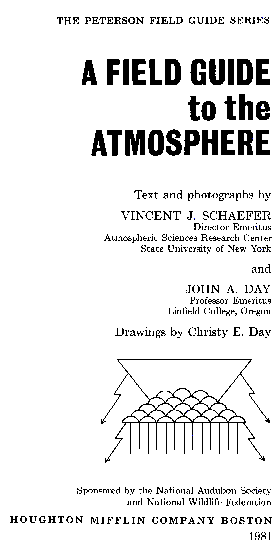
Only about 8 to 12 people can gather around a small chest freezer at one time to see the snowstorm. Therefore a typical class size of a couple dozen students is divided into thirds. The first third is around the freezer while the others watch a TV set showing a live enlargement of what is happening in the freezer. The various thirds are rotated so that everyone gets to see the snowstorms both ways.
The normal order of presentation is:
1. Introduction and equipment.
2. Some cloud physics concepts and vapor deposition.
3. The first snowstorm.
4. Snow crystal growth concepts.
5. The second snowstorm.
6. The discovery of cloud seeding.
7. The third snowstorm.
A section on trouble shooting is available.
There are some supplemental topics for longer or smaller classes.
For longer class times I sometimes bring in my collection of preserved snow crystals dating back to about 1983 and 1962. The students can look at some of them under a microscope.
Additional information is available in A Field Guide to the Atmosphere by Vincent J. Schaefer and John A. Day, book 26 of The Peterson Field Guide Series published by the Houghton Mifflin Company, 1981, ISBN 0-395-24080-8 and ISBN 0-395-33033-5 pbk. The cover page, illustrated here, and some figures on the history page are from that book.

Some of the snow crystal images on the growth page are from Snow Crystals by W.A. Bentley and W.J. Humphreys (1931) as reprinted by Dover Publications, Inc., in 1962 and used with permission.
Back, Next
Home,
equipment,
clouds,
vapor growth,
snowstorm,
crystal growth,
cloud seeding history,
related topics,
water optics,
ice optics,
trouble shooting